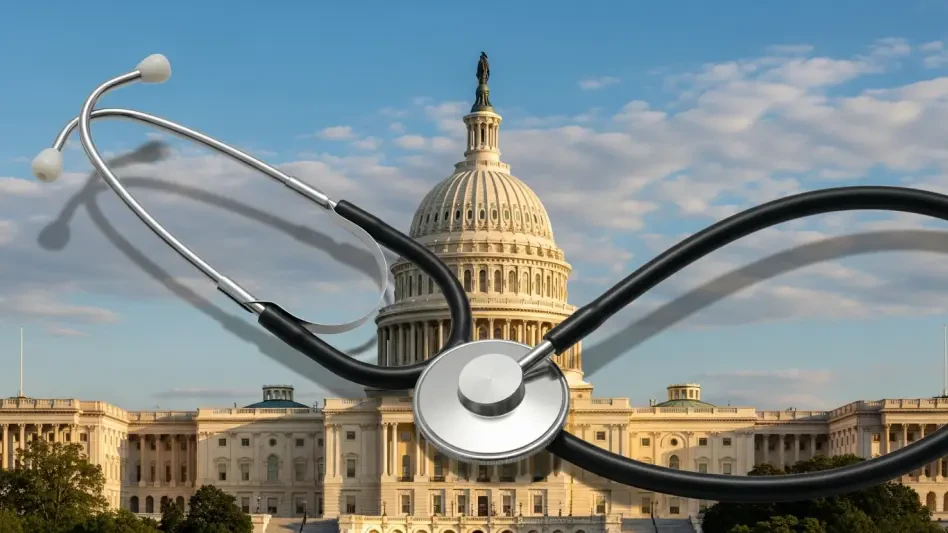As the open enrollment period for the Affordable Care Act (ACA) marketplaces kicked off on November 1 across most states, a cloud of uncertainty hangs over the more than 24 million Americans who rely on these platforms for health insurance. The core issue fueling this confusion is the potential expiration of enhanced premium tax credits at the end of this year, a benefit that currently makes coverage affordable for 92% of enrollees. Without Congressional action, premiums could skyrocket, leaving many to grapple with tough financial decisions for 2026. The ongoing political deadlock, compounded by a month-long government shutdown, only deepens the chaos, as lawmakers remain divided on extending these critical subsidies. This situation underscores the urgency for marketplace shoppers to stay informed and proactive during enrollment. While the future of these credits remains unclear, there are practical steps that can help navigate this challenging period and ensure coverage remains within reach for the upcoming year.
1. Grasping the Background of the Current Crisis
The enhanced premium tax credits, first introduced as part of a COVID-era relief package, were designed to lower health insurance costs for eligible ACA marketplace enrollees and expand access to those with incomes above 400% of the federal poverty level—equivalent to roughly $63,000 for an individual. Extended once before, these benefits are now set to lapse by the end of this year unless Congress intervenes. The political standoff between Republicans and Democrats has stalled progress, with the ongoing government shutdown adding further complexity to the debate. If these credits disappear, the financial burden on subsidized enrollees could be staggering, with average out-of-pocket premiums projected to more than double. Experts warn that such increases could drive many away from coverage altogether, a decision that could prove costly in terms of health and finances. Understanding this backdrop is crucial for anyone navigating the enrollment process, as it sets the stage for the decisions that lie ahead.
This looming expiration isn’t just a policy detail; it’s a potential game-changer for millions of households. The enhanced credits have shielded enrollees from premium hikes in recent years, but without renewal, the full weight of cost increases—pegged at an average of 26% for 2026—will fall directly on consumers. For instance, a family of four earning $75,000 could see their annual premium for a benchmark silver plan jump from under $2,500 to nearly $6,000 if no action is taken. This stark reality highlights the importance of staying engaged with the enrollment process rather than opting out due to sticker shock. Marketplace experts emphasize that even partial coverage is better than none, as going uninsured carries far greater risks. The current Congressional impasse, while frustrating, does not diminish the need to prepare for all possible outcomes, whether that means budgeting for higher costs or seeking alternative plans with lower premiums.
2. Staying Informed on Capitol Hill Developments
Keeping abreast of news from Washington, D.C., is essential during this enrollment period, as Congress could reach a deal to extend the enhanced subsidies at any moment—or fail to act entirely. Such a decision will directly influence premium costs and enrollment choices for 2026. Relying on marketplaces or insurers for updates may not suffice, as many state-run exchanges have delayed sending net premium notices that account for tax credits. Similarly, the federal government, which oversees 28 marketplaces, does not send annual premium notifications to enrollees, and health plans may opt out of providing this information for the coming year. This lack of direct communication means that consumers must take the initiative to seek out reliable sources for the latest legislative updates. Following reputable news outlets or policy trackers can provide clarity on whether relief is on the horizon or if higher costs are inevitable.
Beyond just tracking headlines, understanding the timing of potential Congressional action is critical for planning purposes. A last-minute agreement could alter premium calculations dramatically, potentially lowering out-of-pocket costs even after initial enrollment decisions are made. Conversely, prolonged inaction could lock in steep premium hikes for millions of enrollees, particularly those with incomes above the subsidy eligibility threshold of 400% of the federal poverty level. For these individuals, losing access to any financial assistance could render coverage unaffordable overnight. Experts advise setting up news alerts or regularly checking government announcements to stay ahead of changes that might not be immediately reflected in marketplace systems. This proactive approach ensures that no opportunity to adjust plans or budgets is missed, especially in a landscape where policy shifts can happen with little warning.
3. Refreshing Account Details for Accurate Planning
Navigating the ACA marketplace this year requires a hands-on approach, starting with logging into accounts to update key information such as income, household size, and other relevant changes. Providing an accurate income projection for 2026 is particularly vital, as a provision in HR 1, known as the One Big Beautiful Bill Act, has removed previous caps on repayments for excess premium assistance received due to underestimated earnings. This means enrollees could owe back the full amount of overpaid subsidies, a significant financial risk for those who miscalculate. Automatic reenrollment, a convenient option in past years, is not advisable given the uncertainty surrounding premium costs. Taking the time to manually review and adjust account details can prevent costly surprises down the line and ensure that subsidy calculations reflect the most current data available.
Special attention should be paid by those whose incomes exceed 400% of the federal poverty level, as they may no longer qualify for subsidies if the enhanced credits expire. Without this financial support, premiums could become prohibitively expensive, necessitating a shift to more budget-friendly plans or even reconsidering coverage altogether. Enrollment specialists caution against letting accounts remain on autopilot, as outdated information could lead to incorrect subsidy allocations or unexpected bills. Updating these details also helps in anticipating whether a plan’s full price will be manageable if Congressional action fails to materialize. This step, while seemingly administrative, forms the foundation for making informed choices in a volatile enrollment environment, ensuring that every decision aligns with both current circumstances and potential future shifts in policy.
4. Evaluating Plans Based on Full Listed Prices
When browsing ACA marketplace plans, focusing on the sticker price—rather than assuming subsidies will offset costs—is a prudent strategy given the uncertainty around enhanced tax credits. Premiums are expected to rise by an average of 26% in 2026, marking the largest increase since 2018, and without the current subsidies, enrollees will bear the full brunt of these hikes. For many, this could mean a significant jump in annual costs; a family of four with a $75,000 income might face premiums of nearly $5,900 for a benchmark silver plan, compared to about $2,500 with the credits in place. If the listed price of a plan appears unaffordable without financial assistance, it’s a clear signal to explore other options rather than banking on a last-minute policy change. Making decisions based on what is visible and concrete helps avoid overextending budgets in the face of unpredictable legislative outcomes.
For those finding the full prices daunting, considering less comprehensive plans like bronze options can provide a viable alternative. These plans, while carrying higher deductibles, still cover essential benefits such as preventive care at no cost and some doctor visits before the deductible is met. Another option, promoted by the Trump administration for those facing financial hardship, includes catastrophic plans, which offer essential coverage but come with steep deductibles—$10,600 for individuals and $21,200 for families in 2026. Though premiums for these plans can still run high, they may be a better choice than going uninsured, as experts note that any coverage offers more protection than none. Balancing affordability with adequate protection is key when evaluating plans under the current circumstances, ensuring that financial constraints do not lead to a complete lack of health security.
5. Revisiting and Reviewing Options Regularly
Even if initial premium prices seem discouraging, it’s important not to abandon the enrollment process outright, as Congressional action could still restore the enhanced tax credits before the year ends or beyond. Such a development would drastically alter cost structures, potentially making previously unaffordable plans accessible. Open enrollment in most states, including the 28 using the federal marketplace, extends until January 15, with critical deadlines of December 15 for coverage starting January 1 and January 15 for coverage beginning February 1. Some states offer even later deadlines, providing additional time to reassess options. Regularly checking back on the marketplace for updates or revised pricing can uncover new opportunities, especially if policy shifts occur mid-enrollment. Persistence in exploring available plans ensures that no potential savings or coverage improvements are overlooked during this fluid period.
This iterative approach also guards against making hasty decisions based on temporary frustration with high costs. Experts advise against closing the door on coverage after a single disappointing review, as the legislative landscape remains unpredictable. A sudden agreement in Congress could retroactively adjust premiums or subsidies, benefiting even those who enroll early at higher rates. Keeping an eye on key dates and marketplace updates allows for flexibility in switching plans or adjusting coverage levels as new information emerges. For many enrollees, this ongoing vigilance could mean the difference between securing affordable insurance and facing insurmountable costs in the coming year. Staying engaged with the process, despite initial setbacks, positions consumers to capitalize on any favorable changes that might arise from Capitol Hill deliberations.
6. Holding Off on Premium Payments Strategically
When it comes to finalizing enrollment, delaying premium payments until absolutely necessary can offer a tactical advantage, as marketplaces and insurers often have leeway to extend deadlines or provide grace periods. Historically, state officials and insurance companies have implemented creative solutions to keep enrollees covered, such as allowing extra time for initial payments. This flexibility could prove invaluable if Congress reaches a last-minute deal to reinstate enhanced tax credits after a premium has already been paid based on lower subsidy levels. Mechanisms may exist to reconcile such discrepancies, ensuring that enrollees receive the full benefit of any increased credits, though the exact process for this enrollment period remains undefined. Holding off on payment until closer to coverage start dates can thus minimize the risk of overpaying in a rapidly evolving policy environment.
This cautious approach to payment also allows time to confirm that the chosen plan aligns with both budget constraints and potential subsidy adjustments. If a legislative breakthrough occurs, those who have delayed payment might avoid the hassle of seeking refunds or adjusting coverage midstream. Experts note that while premiums are typically due before a plan takes effect, the current uncertainty justifies a wait-and-see strategy where feasible. For enrollees concerned about losing their selected plan, contacting marketplaces or insurers for clarification on payment deadlines can provide peace of mind without committing funds prematurely. This measured tactic ensures that financial decisions reflect the most up-to-date information, safeguarding against unnecessary expenses in a time of significant flux for ACA marketplace policies.
7. Looking Ahead to Secure Coverage Solutions
Reflecting on the challenges faced during this enrollment period, it became evident that political gridlock had placed millions of ACA marketplace shoppers in a precarious position. The potential lapse of enhanced premium tax credits had driven fears of unaffordable premiums, with projected increases averaging 26% for the following year. Despite the uncertainty, actionable steps emerged as vital tools for navigating the crisis. Moving forward, enrollees should prioritize continuous engagement with marketplace updates and legislative news to adapt swiftly to any policy changes. Exploring lower-cost plan options, such as bronze or catastrophic plans, offers a safety net for those bracing for higher costs. Additionally, maintaining updated account information and strategically timing premium payments can prevent financial missteps. As the situation evolves, staying proactive and informed will be key to securing affordable health coverage, ensuring that no opportunity for relief or adjustment passes by unnoticed.









